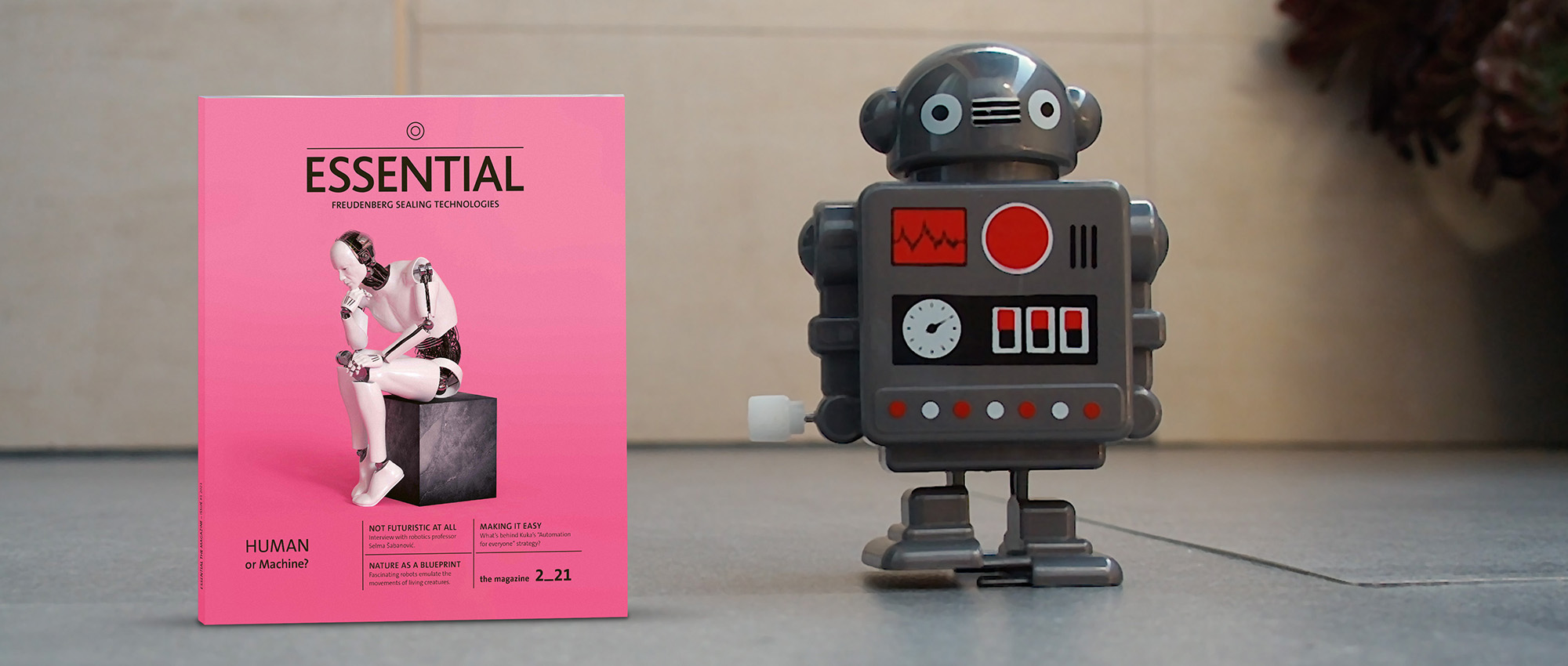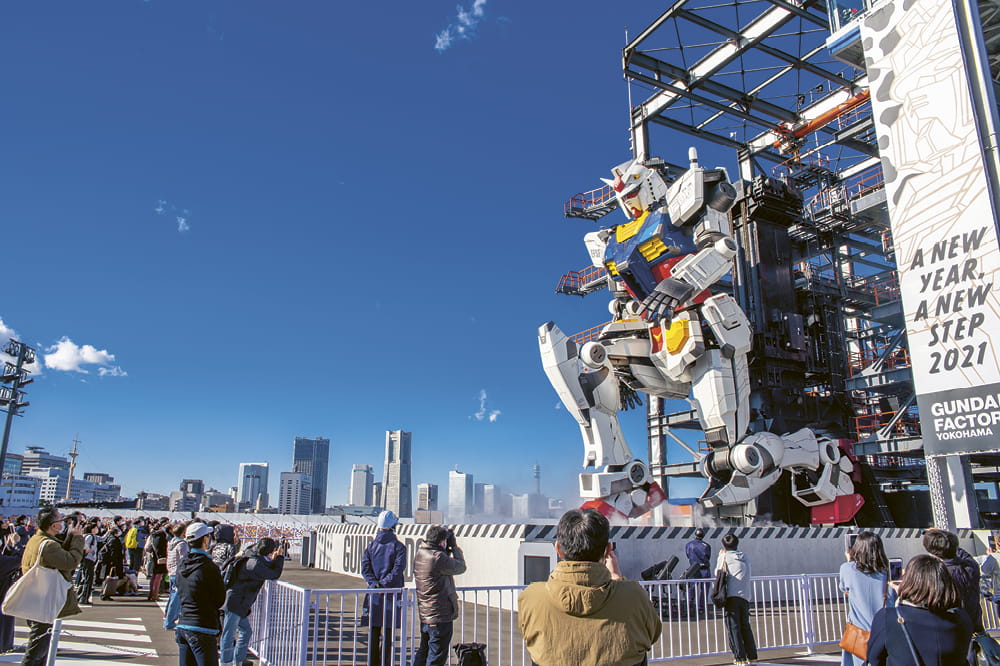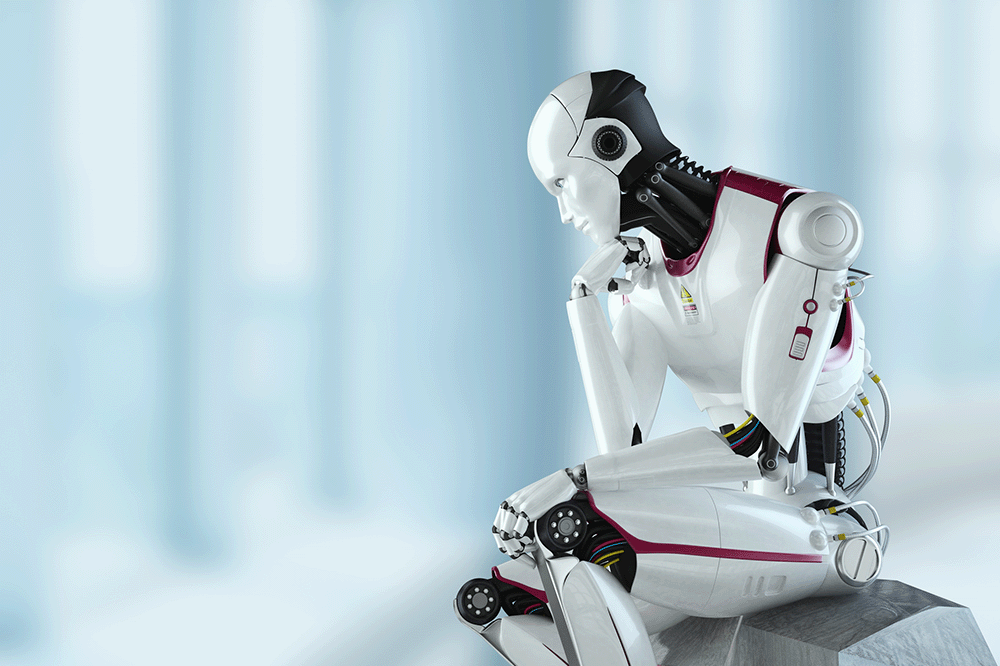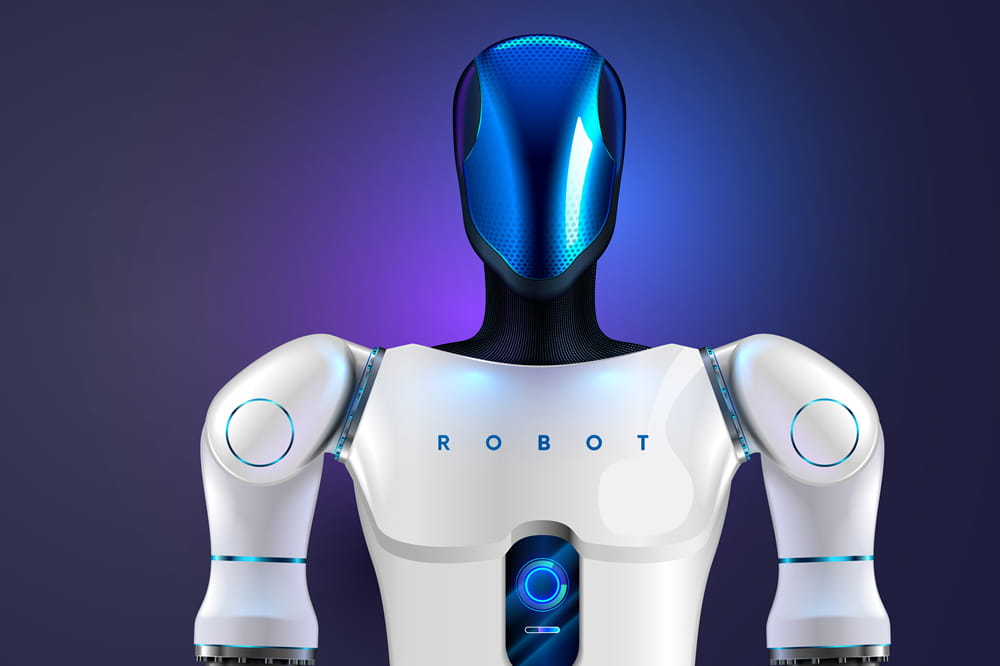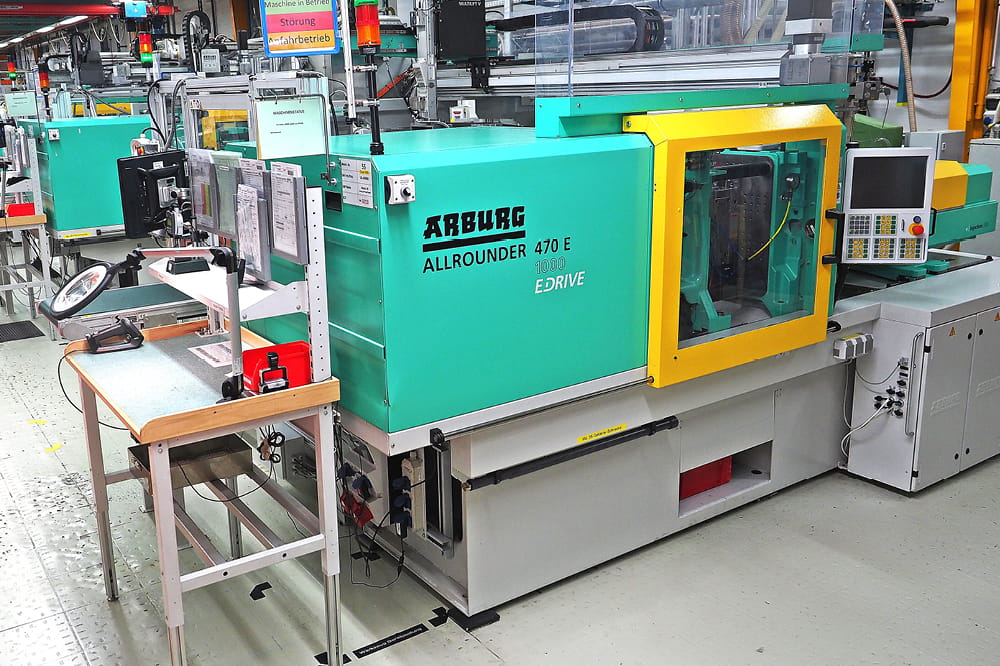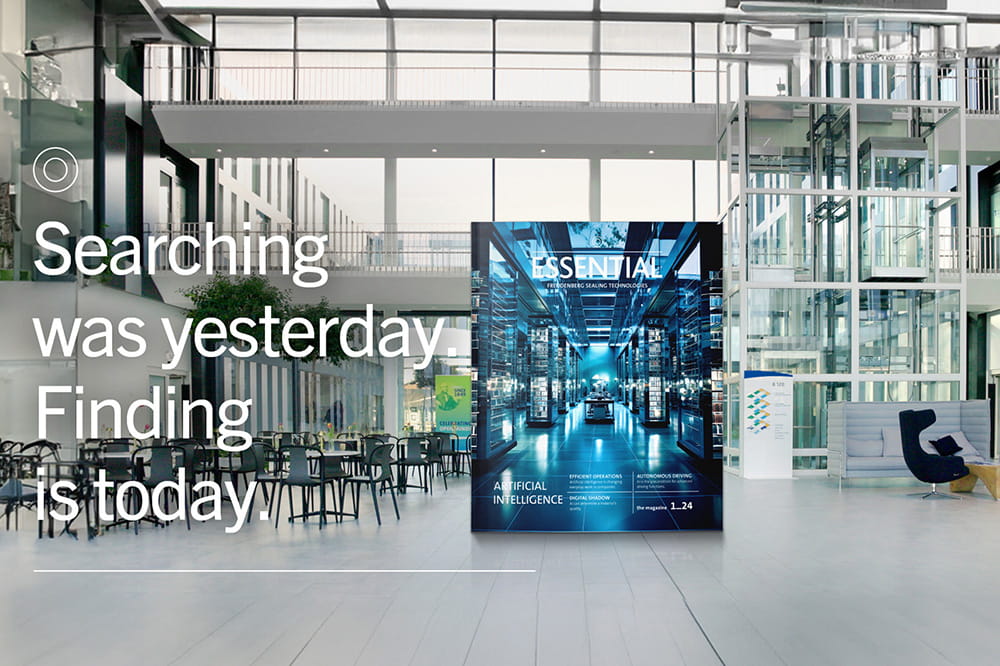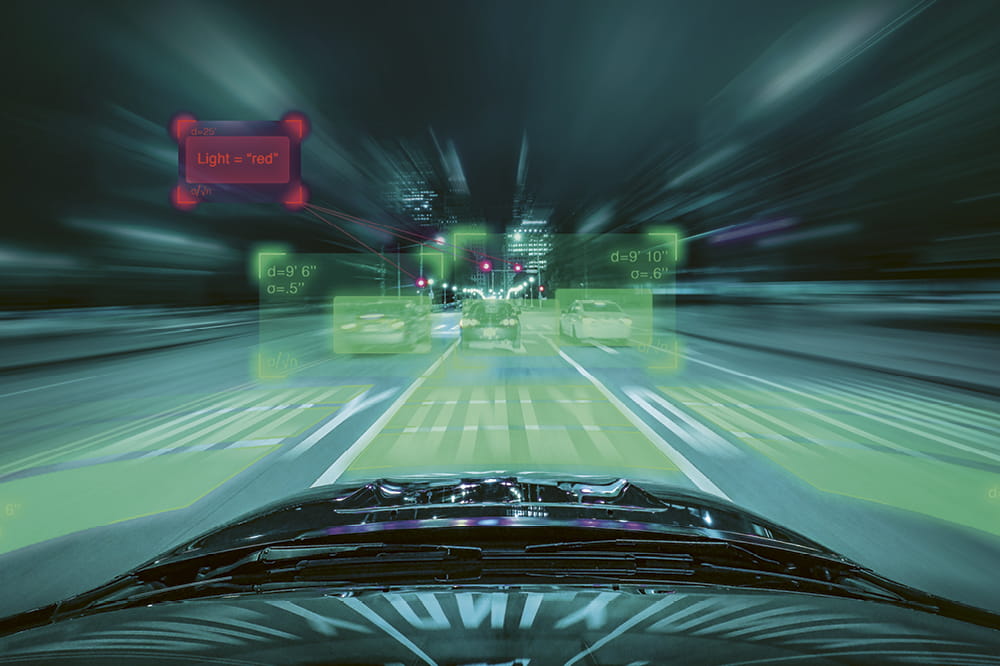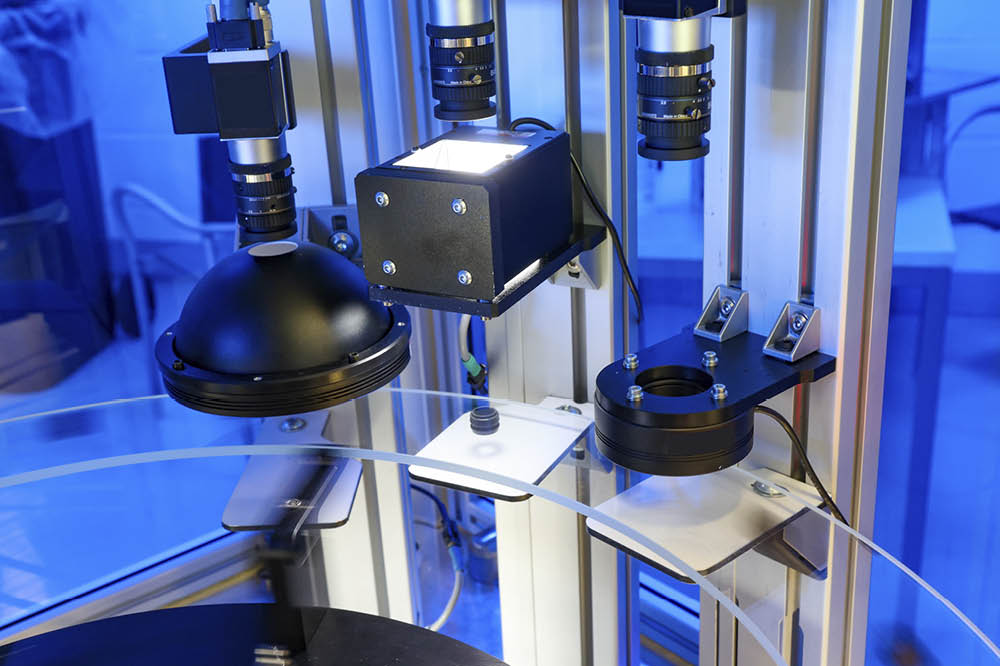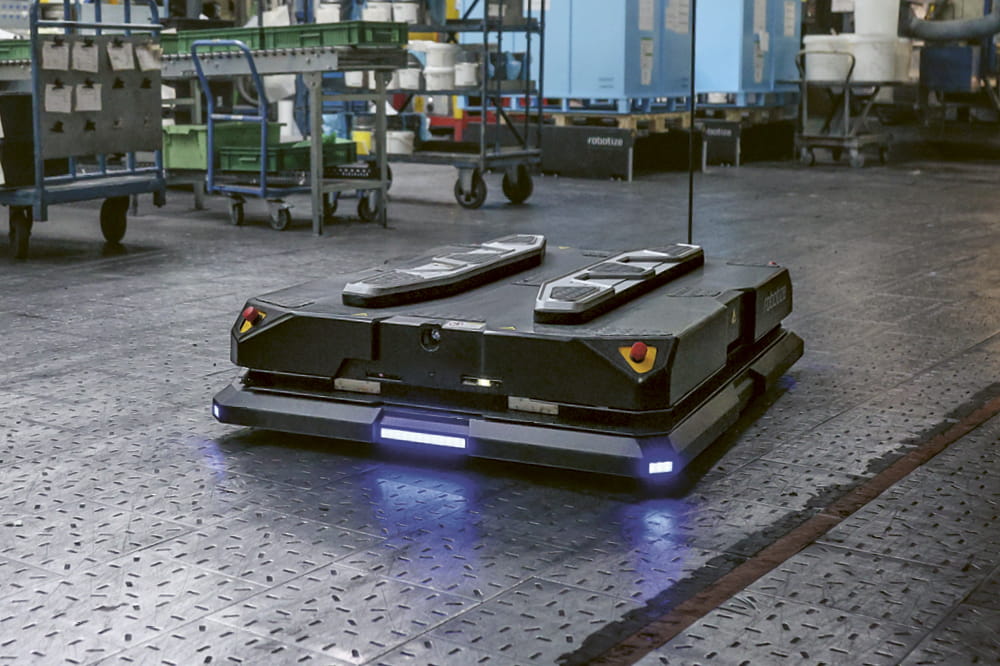Obtain news and background information about sealing technology, get in touch with innovative products – subscribe to the free e-mail newsletter.
16.11.2021 | Story
Human or Machine?
Robots are fascinating. They’ve always instilled hope and fear in us. Large factory machines for a while, soon coworkers and vehicles, tiny or virtual. They are conquering industries and private spheres. What are they? What are their capabilities? A search for mechanical systems, intelligence and interaction, even ethics and emotions.
Dreams of robots are old – very old. The Greeks of antiquity told tales of an animate bronze statue called Talos. In Buddhist India, automatons were envisioned as tomb guards 3,000 years ago. Long ago, engineers in Rome, Athens and Egypt were already constructing machines and statues that moved with deceptive verisimilitude, even if hydraulics and wires were likely the mechanisms at work. For millennia, humans have pondered whether intelligent human-machines could do our work for us, even as they considered the opportunities and risks that this might entail.
But the automatons of ancient mythology and the early apparatuses were not “authentic” robots. The objection is justified, and it leads us directly to the question of what an “authentic robot” is. “I can’t exactly say what a robot is,” Joseph Engelberger, one of the pioneers of industrial robotics, was once quoted as saying. “But I can recognize a robot when I see it.” Engelberger died in 2015, and today he might be shocked at the sight of robot dogs, autonomous vehicles, chat-bots, the Mars rover, robot mowers and one-armed industrial machinery – the diversity of robots and autonomous appliances has become immense. But experts still argue about a key issue: What distinguishes a robot from just another machine?
For example, at first glance, software bots bear little resemblance to robots. After all, they only exist virtually. In terms of what they do, however, they are surprisingly similar to autonomous machines made of metal and plastic. They work independently. With the help of artificial intelligence, they learn how to respond to unforeseen events on their own. Advances in information technology have opened up completely new possibilities. Statistically speaking, every household in the United States already has six smart, networked devices, ranging from smart phones and cars to vacuum cleaners. Many of these devices are not yet robots, but they are already starting to collect information about us, interpret it, and interact with us in the truest sense of the word. The gulf between them and what most of us would call “robots” is not very wide. At the same time, the increased networking of smart devices such as catalytic converters is a boon for the entire service-robot segment. It enables the robots to access even more information and be more easily controlled with an end-device. Service robots are conquering every industry: logistics, safety, education, retail, medicine and caregiving. The latest edition of ESSENTIAL shines a spotlight on some of these industries and potential applications.
The biggest challenges for robots are often the functions that are the easiest for humans.
Hans Moravec
There has long been movement in the industrial robot market. Machines are continuing to learn here as well. They are designed to work, move around, and communicate with human workers more and more independently. We are talking about people and machines here. There is a related human fear that robots one day will be more intelligent than we are – and will ultimately achieve world domination. The fear is based in part on a misunderstanding of intelligence. Machines can use or interpret terms without ever understanding what the term actually means. Intelligence is not just computing power, but encompasses senses, emotions and the power of imagination. The most advanced robots today do not even come close to these capacities and may never attain them.
In fact, we shouldn’t forget that the rate of progress in robotics is often overestimated. When artificial intelligence got its start in the 1950s, the interpretation of human speech was expected within a decade. But robots have had problems with it down to the present. The paradox formulated by Hans Moravec in the 1980s still applies: The biggest challenges for robots are often the functions that are the easiest for humans. This especially includes our perception and our motor skills. Despite advances in sensor systems, many machines still do not perceive their environments well and are incapable of picking an object up from the floor. Depending on the yardstick, small children learn 10 to 1,000 times more quickly than the most advanced neural network. In the future, some developments will surprise us – and others will not materialize as quickly as expected.
One thing is clear: The robot market will continue to grow. And this growth will be accompanied by progress on the mechanical side. It will involve joints that function even more precisely and find a home in more industries and areas of application, sometimes under extreme conditions, from the Arctic to the ocean depths. All of this means that the demands on seals are increasing – and so are the opportunities for us, Freudenberg Sealing Technologies, to capitalize on our expertise and quality standards. We have compiled examples along these lines in the latest edition of ESSENTIAL. We are curious about the future and are sure we will be able to make a contribution to it. The robots of the 21st century will no longer have the hidden wires of their ancient antecedents – but a great many of them will have seals.
ESSENTIAL – the Magazine
Don’t Miss a Trend
Smart sealing solutions for nearly every sector, technology trends and exclusive interviews – Find them in our company magazine ESSENTIAL with a print subscription and digitally.
More news on the subject Robotics

Join Us!
Experience Freudenberg Sealing Technologies, its products and service offerings in text and videos, network with colleagues and stakeholders, and make valuable business contacts.
Connect on LinkedIn! open_in_new